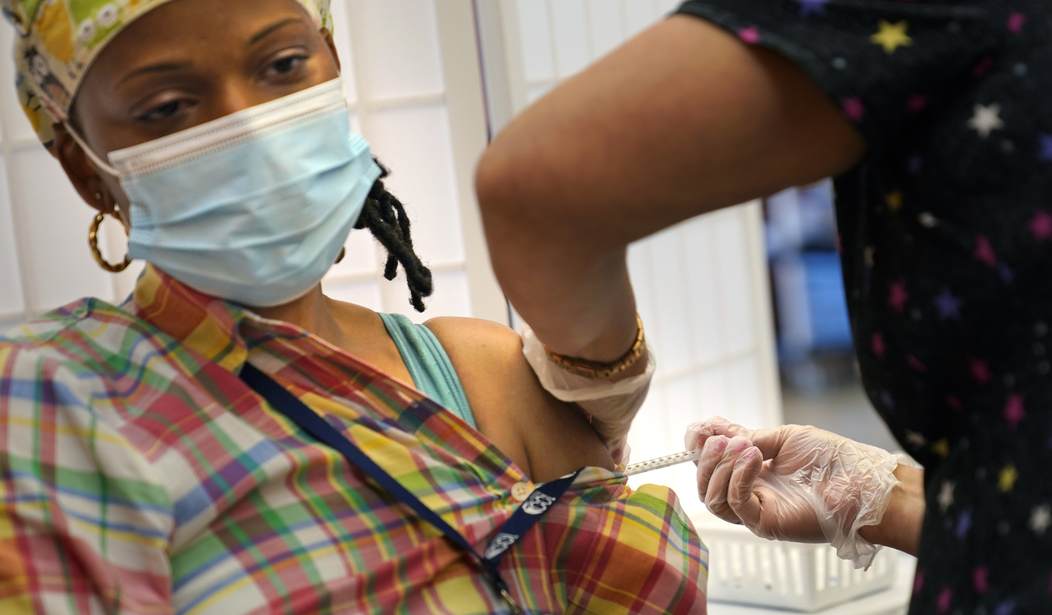My gut reaction to all questions about why the U.S. has fared worse with COVID than many other nations is always “We’re fat.”
Direct, uncomplicated, and certainly correct. We’re fat. There’s science to back it up too.
Public health phenomena affecting hundreds of millions of people are never quite so simple, of course. But we are doing worse with Omicron and scientists are trying to figure out why:
Now adding hospitalizations for these same countries@OurWorldInData pic.twitter.com/G2yRk1PWM8
— Eric Topol (@EricTopol) January 10, 2022
Could it be that we’re folding “incidental” hospitalizations into our COVID data to a far greater degree than Europe is? Maybe. But David Wallace-Wells notes that the data in the UK on severe hospitalizations (i.e. ventilators) was flat during their recent Omicron wave. In New York, America’s hot spot, ICU visits have gone up and are still increasing, approaching their peak of last winter’s wave:
Not only did New York State report >90,000 new cases today, but it has now exceeded the number of hospitalizations and ICUs from its winter peak.
Doesn't bode well for the rest of the country
(NYS good immunity wall: 2-shot vaccinated rate 72 vs 62%, US avg + lots of prior Covid) pic.twitter.com/svXUDWvvIA— Eric Topol (@EricTopol) January 8, 2022
“[A] 70 percent jump in cases accompanied by a 60 percent jump in ICU admissions does not suggest a dramatic ‘decoupling’ of the kind we’ve observed in South Africa and Europe and seemed almost trying to will into existence here,” Wallace-Wells writes. Scientists have floated a few theories to him on why we’re getting it worse than other western countries:
Why might our Omicron surge be different from the European one? Looking at the country as a whole, one big answer is obvious: Our vaccination rates are markedly lower than most European countries. (That is the hypothesis put forward by Burn-Murdoch, examining the divergent patterns of decoupling in the U.S. and U.K.) A second related answer is that we’ve done an even worse job, compared to our European peers, vaccinating and boosting the elderly. (Eric Topol of Scripps has emphasized this fact.) A third possibility is that the relatively high levels of severe disease we are seeing in New York and throughout the U.S. are the residue of that lingering Delta wave — either the effect of some limited amount of ongoing spread of the more virulent variant or the impact of cases that began their clinical cycle a few weeks ago and are still requiring treatment in the hospital.
It’s true, the UK has given out many more boosters than we have as a share of their population. Close to 36 million people there have had a third dose, more than half the national population. Here just 75 million have received one, less than a quarter population-wise. Still, South Africa is vastly less vaccinated than either country and they’ve done well in holding down severe illness from Omicron. Is that because their population is younger (and thinner)? Is it some seasonal effect due to the fact that it’s summer there? South Africa has a high rate of natural immunity from prior infection, which must have helped them beat back the new variant, but so do the U.S. and UK. That can’t account for the difference.
And while the UK may have a greater share boosted than we do at a national level, New York City is vaccinated at a rate comparable to the Brits (at least in terms of receiving two doses). Even so, we seem to be seeing somewhat worse outcomes on average than they are. It can’t all be Delta’s fault either, notes Wallace-Wells, since NYC wasn’t in the midst of a major Delta surge when Omicron arrived and sent cases skyrocketing.
To make things even more mysterious, there’s a strange divergence between the U.S. and Europe with respect to who’s being infected by Delta. Over there, the vaccinated are testing positive at least as often as the unvaccinated are, and in some cases represent a higher share of the infected population than they do the total population. In the UK, Wallace-Wells points out, two-thirds of hospitalized people are vaccinated. That’s not so here. In New York lately, the unvaccinated are waaaaay more likely to test positive and be hospitalized. Are our vaccines simply that much more effective than the ones being used in Britain?
Whatever the explanation, as the Omicron wave ripples out from NYC to the rest of the country, the hospital crisis nationally is growing more dire. Michael “Dr. Doom” Osterholm warned us a few weeks ago, dramatically, that everyday life in the U.S. would be difficult to sustain this month as half the country catches the new variant and calls in sick to work. That dire predication is starting to bear out on the ground, with police, fire departments, EMTs, hospitals, and other basic services struggling to cope with staffing shortages. No one has it worse than emergency rooms, where doctors and nurses somehow have to manage surging patient loads amid illness in their ranks and bone-deep burnout after two years of the pandemic. The numbers are turning scary, writes Ed Yong:
In this surge, COVID-19 hospitalizations rose slowly at first, from about 40,000 nationally in early November to 65,000 on Christmas. But with the super-transmissible Delta variant joined by the even-more-transmissible Omicron, the hospitalization count has shot up to 110,000 in the two weeks since then. “The volume of people presenting to our emergency rooms is unlike anything I’ve ever seen before,” Kit Delgado, an emergency physician in Pennsylvania, told me. Health-care workers in 11 different states echoed what he said: Already, this surge is pushing their hospitals to the edge. And this is just the beginning. Hospitalizations always lag behind cases by about two weeks, so we’re only starting to see the effects of daily case counts that have tripled in the past 14 days (and are almost certainly underestimates). By the end of the month, according to the CDC’s forecasts, COVID will be sending at least 24,700 and up to 53,700 Americans to the hospital every single day.
“In the last two years, I’ve never known as many colleagues who have COVID as I do now,” Amanda Bettencourt, the president-elect of the American Association of Critical-Care Nurses, told me. “The staffing crisis is the worst it has been through the pandemic.” This is why any comparisons between past and present hospitalization numbers are misleading: January 2021’s numbers would crush January 2022’s system because the workforce has been so diminished. Some institutions are now being overwhelmed by a fraction of their earlier patient loads. “I hope no one you know or love gets COVID or needs an emergency room right now, because there’s no room,” Janelle Thomas, an ICU nurse in Maryland, told me.
According to the New York Times’s tracker, hospitalizations yesterday were the third-highest of the entire pandemic. At the right we’re going, we might blow past the record this week:

Right, granted, some large percentage of those hospitalizations is “incidental.” In NYC last week, more than half of those who tested positive in hospitals were admitted for other reasons. But the “incidental” category also includes people who need emergency care for an underlying health problem that’s been exacerbated by their COVID infection; those patients aren’t going to be bandaged up and sent on their way in an hour, which means further strain for hospitals. Other “incidental” cases include people who were negative when they got to the hospital and then caught COVID on the premises, requiring extra care. That adds to the load too. If Yong’s math is right about the spectacular rate at which hospitalizations might rise this month as Omicron spreads from big cities into rural communities, we may see more admissions for COVID than ever before during the pandemic even if we subtract the “incidental” admissions. This has always been the risk from a hyper-transmissible strain like the new variant, that it would infect such a tremendously huge number of people that it would end up sending more to the ER than Delta even though it’s innately “milder” than Delta is.
There are plenty of vulnerable people still out there too:
So at least 40M Americans vulnerable to severe disease if infected
A quarter could easily get infected in Omicron wave
And 10% of them hospitalized
That's 1M+ hospitalizations
There is no way our healthcare system can handle that in the next month or 6 weeks
9/12
— Ashish K. Jha, MD, MPH (@ashishkjha) January 8, 2022
I’ll leave you with this look at death rates in Omicron hot spots. Fewer are dying now than were dying last winter, but it’s possible NYC and other cities will 50-75 percent of peak daily deaths from January 2021 before this is over. “Milder” is a relative term.








Join the conversation as a VIP Member